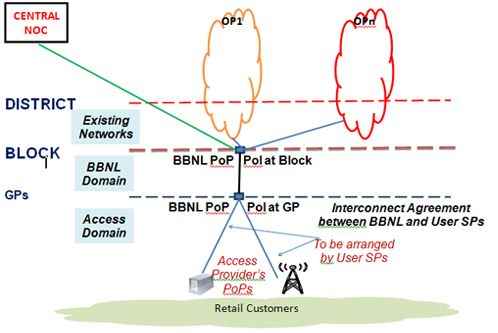How Digital India initiative can revive the education sector

Almost every sector has high hopes from the Digital India initiative, which is extensively based on faster communication facilities such as National Optical Fibre Network and adoption of Internet enabled devices such as smartphones and tablets.
India's education system has long waited for a major revamp. Not that we aren't seeing positive changes but that dream of having modern high tech education accessible to all seems far from reality. While the previous government tried to bridge the digital divide, the new Narendra Modi-led government has launched a new Digital India Campaign.
Unsurprisingly, there are high hopes from the new initiative, which is likely to benefit a lot of sectors, especially e-commerce, banking, health and e-governance. Education is also one of the important elements of this initiative. But, will Digital India help education become modern and accessible to all? How can it be achieved? What are other modern technologies that are helping evolve the modern education system?
Who are going big on digital education
Fortunately, tech giants including the likes of Intel, Qualcomm and Tata have made some strides in this direction. Intel recently launched ‘Digital Skills for India’ initiative under which it introduced Digital Skills Training Application that is comprised of modules on Digital Literacy, Financial Inclusion, Healthcare and Cleanliness in five Indian languages.
Qualcomm has launched Play ‘n’ Learn program for school children ages 5-8 in. Qualcomm is providing 3G tablets under the Qualcomm wireless Reach initiative. Samsung recently launched a Smart Learning initiative to provide interactive study material to students.
According to an Indalyitcs report, Tata, Reliance and BSNL are among the big names that are going big on the segment. Tata is expanding its school education solution, ‘Classedge', while Reliance took over 38.5 % stake in digital education company, Extramarks Education Private Limited, through its subsidiary, Infotel Broadband Services Limited. BSNL has teamed up with Greycell 18 Media Private Limited, to launch its online education service ‘Topper Education’.
Other notable names are DataWind, Meritnation, and Classteacher in this segment. As we pointed out in our previous analysis, e-commerce players have shown keen interest in the digital education segment. If the e-learning/education market grows, it will definitely revamp the education landscape in India.
NOFN, Smart Classes, Gamification and more
Indian government's ambitious National Optical Fibre Network (NOFN) is going to be backbone of the Digital India campaign. Expansion of broadband connectivity (especially the faster network and mobile broadband) is going to help growth of e-learning.
NOFN Concept Diagram
“There are three components of technology enabled modern education. Digital Content, Technology platform and delivery infrastructure i.e. Internet. However there is a lack of internet infrastructure. Availability of high quality wireless internet speed is still a challenge. Penetration is also an issue currently. Right ecosystem can be created when we will be able to empower better quality mobile based Internet. Increasing internet footprint will also help to create the right ecosystem,” explains Ritesh Raushan, Co-Founder and Director, The Gate Academy.
Of late there's a lot of focus on gamification. A lot of interactive online and offline tools are being developed to modernise the segment. Robotic education has also taken off well in the country.
Next Education India Pvt Ltd is one of the companies targeting this segment for quite some time. Company's EVP – Research & Development, Sameer Bora explains: “Robotic education is growing globally as well as in India. It has all the potential to help education gets modern and make learning easy for students.”
"Robotics will play a major role in the future so it is imperative that we prepare the present generation of students for this transition. The use of robotics in the current Indian education system is an intriguing mix of theory and practical. When used properly in schools, it forms the basis of cross-curriculum activities and becomes an ideal resource to teach Mathematics, Scientific principles, Design and Technology and Computer programming," he adds.
“Smart classes as aid to classroom faculties, is already an accepted reality, especially in K 12 segment. We see similar momentum in test prep industry also. We have successfully piloted PPT and animation based learning. Gamification/ simulator kind of concept learning initiatives are very popular in K 12 segment,” adds Ritesh Raushan.
"Online learning or Live Virtual Classrooms (LVC) have paved the way for modern education in India. With the evolution of technologies such as the Cloud, Data Centers & Virtualization, there is a huge potential for technology to be integrated into education industry. However, this segment is largely untapped. Low adoption rate is one of the reasons because technology enablers in rural India are still scarce. The requisite Infrastructure & Security must be in place in order to set the ball rolling for digital education. Availability of internet in remote areas, that allows two-way interaction and performance feedback are some of the fundamentals needed to launch a more widespread platform for LVC market in India. Moreover, India is yet to travel a long way to shift the mindset of people from distance education to online education," says Rohit Aggarwal, CEO & Founder, Koenig Solutions Ltd.
"Now with government initiatives and PM Modi's Digital India dream, the ecosystem we seek is not a distant reality. Indian youth are technology-driven and find online learning to be especially beneficial as it saves them significant amount of cost, time and effort. For young working professionals who are determined to imbibe new skills to excel in their careers faster, LVC is the perfect option since they can pursue knowledge at their own pace and time."
What we need: More devices and an ecosystem
At almost every discussion forums on Digital India, there's been a consensus on the need for a greater participation from the industry and stakeholders. For the education segment, tech companies have to take the lead and help enable a strong ecosystem.
Educational devices were in trend a couple of years ago. But, of late we haven't seen many educational devices. While we definitely need more education-centric devices, we also need more applications and services to fortify the ecosystem. Developers and content providers are only going to be encouraged if there plenty of devices, more importantly interest of tech companies. Also read: Apple CEO: We've locked up 94% of education tablet market
Even as we criticise tech companies for not launching enough educational devices, we need to point out the potential (untapped to some extent) of this segment in India – according to a February report from India Ratings and Research Pvt. Ltd, a part of the Fitch group, the Indian education market is estimated to be worth whopping Rs.5.9 trillion in 2014-15 against Rs.3.33 trillion in 2011-12. Apparently, there's a huge market yet to be explored.
Concluding,
Digital India is one of the most ambitious projects launched by the Indian government. Traditionally, India always had ambitious projects and plans, but implementation and execution has been sluggish. Good thing is there's a lot of positivity around the Digital India initiative. As said above, digital education could be one of the segments that can be best benefited from the initiative.
What do you think about the status of digital education in India? What challenges do you foresee? Let us know your views in the comments section below:
Also read: Modi effect: 5 ways BJP government can impact the tech landscape in India and Will the Modi government lead to a telecom industry revival?





